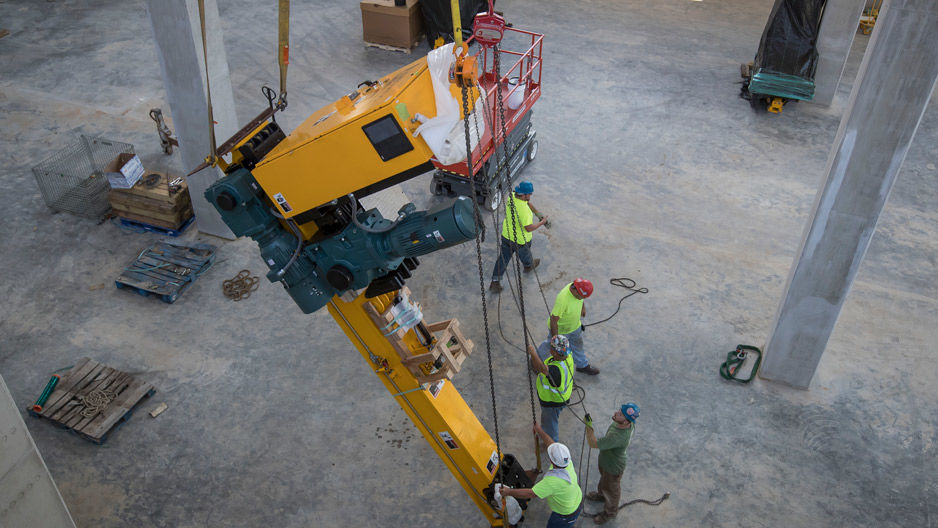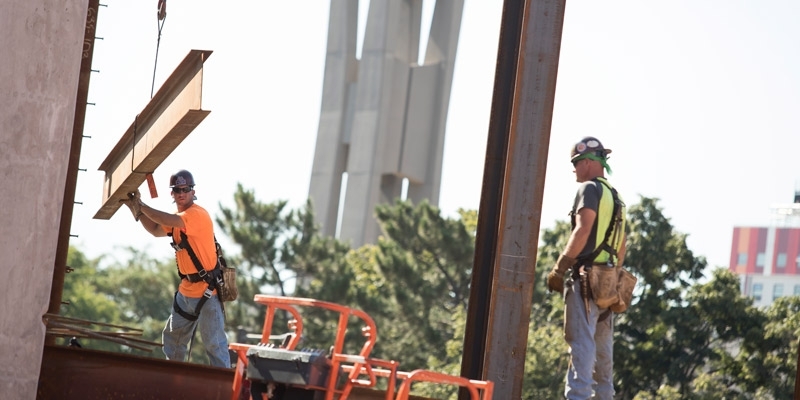Posted October 18, 2017
The robots have landed
The new robotic book delivery systems will dedicate only 40 percent of the new library’s space to book storage.

Photography By:
Betsy Manning
Construction workers lower the new robotic book retrieval and delivery system.
The robots have arrived.
The revolutionary robotic Automated Storage and Retrieval System, also known as BookBot, has been delivered and placed into the site of the new library on Main Campus. The system will make it possible to use less floor space for book storage, giving way to increased space for learning. The new library will still house the same number of books and publications as Paley—about 2 million—but they’ll be organized differently.
When library visitors want a book that is not in the stacks, they will search a database linked to a robotic crane that will retrieve the requested title. The retrieval system has an almost perfect success rate and will make it easier for students and faculty to find and retrieve books.
Temple’s new library will be more user-focused. The space freed up by BookBot will be designated for classrooms, meeting rooms and studios. The new library will dedicate just 40 percent of its space for book storage, compared with Paley Library—which was constructed in the 1960s—where roughly 70 percent of space is used for books.
Traditional stacks, with approximately 200,000 titles searchable by hand, will still exist in the new library. The BookBot system will save space by storing other titles inside metal bins stacked inside four bays, each approximately 48 feet tall and 119 feet long. A fifth bay will house the library’s special collections. Browsable books in the open stacks will be a changing collection and include books purchased in the most recent three years, along with high-circulation titles and titles with visual content, such as art books, Joe Lucia, dean of University Libraries, explained.
Temple joins more than 25 other schools in North America that have BookBots, including North Carolina State, University of Louisville and University of Nevada, Las Vegas.


